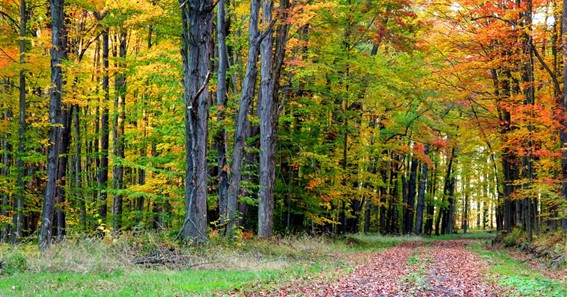Are you curious to know what is reserve forest? You have come to the right place as I am going to tell you everything about reserve forest in a very simple explanation. Without further discussion let’s begin to know what is reserve forest?
What Is Reserve Forest?
In our quest to strike a balance between human development and environmental preservation, the concept of reserve forests has emerged as a crucial component of conservation efforts. Reserve forests are protected areas designated by governments to safeguard and sustainably manage forests and their biodiversity. In this blog, we will delve into the significance of reserve forests, their conservation objectives, and the benefits they offer to ecosystems and society.
Understanding Reserve Forests:
Reserve forests are specific areas of land set aside and legally protected by governments to conserve and manage forest resources and their associated ecosystems. These forests play a vital role in preserving biodiversity, maintaining ecological balance, and providing numerous environmental and socio-economic benefits.
Conservation Objectives Of Reserve Forests:
- Biodiversity Conservation: Reserve forests serve as sanctuaries for diverse flora and fauna. They provide habitats for endangered species, protect endemic plants, and maintain ecological corridors that facilitate species migration and genetic exchange. By preserving these ecosystems, reserve forests play a crucial role in safeguarding biodiversity.
- Watershed Protection: Many reserve forests are located in areas that serve as crucial water catchments. They act as natural filters, preventing soil erosion, regulating water flow, and maintaining the quality and quantity of freshwater resources. The conservation of reserve forests directly contributes to ensuring the availability of clean water for both wildlife and human populations.
- Climate Regulation: Forests are known as “lungs of the Earth” due to their ability to absorb carbon dioxide and release oxygen. Reserve forests play a significant role in mitigating climate change by sequestering carbon and reducing greenhouse gas emissions. They help stabilize regional climates, mitigate the impacts of extreme weather events, and maintain overall environmental balance.
- Ecosystem Services: Reserve forests provide a range of ecosystem services that are vital for human well-being. They purify air, regulate temperatures, maintain soil fertility, and support pollination and natural pest control. These services are essential for sustainable agriculture, human health, and overall ecological resilience.
Benefits Of Reserve Forests:
- Biodiversity Preservation: Reserve forests offer a haven for diverse plant and animal species, protecting them from habitat destruction and human encroachment. Preserving biodiversity ensures the long-term survival of species, maintains ecological balance, and contributes to the resilience of ecosystems.
- Sustainable Resource Management: Reserve forests enable sustainable utilization of forest resources. They provide timber, non-timber forest products, medicinal plants, and other natural resources that can be harvested with proper management practices. This ensures the continued availability of these resources for present and future generations.
- Ecotourism And Education: Reserve forests often attract nature enthusiasts, researchers, and eco-tourists. They offer opportunities for educational programs, scientific research, and recreational activities that promote environmental awareness and appreciation. Ecotourism activities in reserve forests can also contribute to local economies and community development.
- Cultural And Spiritual Value: Many reserve forests hold cultural and spiritual significance for indigenous communities and local populations. They provide spaces for cultural practices, rituals, and traditional knowledge transfer. The preservation of these forests helps safeguard cultural heritage and promotes intergenerational connectivity.
Conservation Challenges:
While reserve forests play a vital role in environmental preservation, several challenges need to be addressed:
- Illegal Logging And Poaching: Encroachment, illegal logging, and wildlife poaching pose significant threats to reserve forests. Effective enforcement, community engagement, and awareness campaigns are crucial to combating these activities.
- Habitat Fragmentation: Fragmentation of reserve forests due to infrastructure development and human encroachment disrupts ecological connectivity. Measures to mitigate habitat fragmentation, such as creating wildlife corridors, are essential for maintaining biodiversity.
- Climate Change Impacts: Climate change poses challenges to the resilience of reserve forests.
Rising temperatures, changing precipitation patterns, and increased frequency of extreme weather events can negatively affect forest ecosystems. Adaptive management strategies are necessary to address these impacts.
Conclusion:
Reserve forests are invaluable assets in our collective efforts towards biodiversity conservation and sustainable development. By preserving and managing these forests, we can protect biodiversity, safeguard ecosystem services, and ensure a harmonious coexistence between humans and nature. It is crucial for governments, communities, and individuals to work together in the effective management and conservation of reserve forests for the benefit of present and future generations.
FAQ
What Is The Reserve Forest Of India?
The forests which are protected and owned by the Government of India is known as a reserve forest. The first reserve forest of India is Satpura National Park, which is also known as Satpura Tiger Reserve.
What Is The Reserve Forest Class 10th Answer?
Reserved forests are protected forests with a natural habitat that has a high degree of protection from any kind of hunting and poaching.
What Are Forest Reserves Class 8?
– A forest reserve is a protected forest area of significance to wildlife, flora, fauna, or geological or other characteristics of special interest that are preserved and maintained for conservation purposes and offer special opportunities for study or research.
What Is Reserved Forest And Protected Forest?
In reserved forests, activities like lumbering, grazing, and hunting are banned whereas in protected forests, sometimes the local community has got the rights to activities like hunting and grazing as they are living on the fringes of the forest because they sustain their livelihood wholly or partially from forest
I Have Covered All The Following Queries And Topics In The Above Article
What Is Forest Reserve
What Is The Meaning Of Reserve Forest
What Is Reserve Forest In India
What Is A Reserve Forest
Reserved Forest Class 10
Protected Forest
What Is Reserved Forest And Protected Forest
What Is Reserved Forest Class 9
Reserved Forest And Protected Forest Upsc
What Are Reserved Forest Class 8
Reserved Forest Example
Reserved Forest Protected Forest And Unclassed Forest
What Is Reserve Forest
What is the meaning forest reserve
What is a reserve forest?






